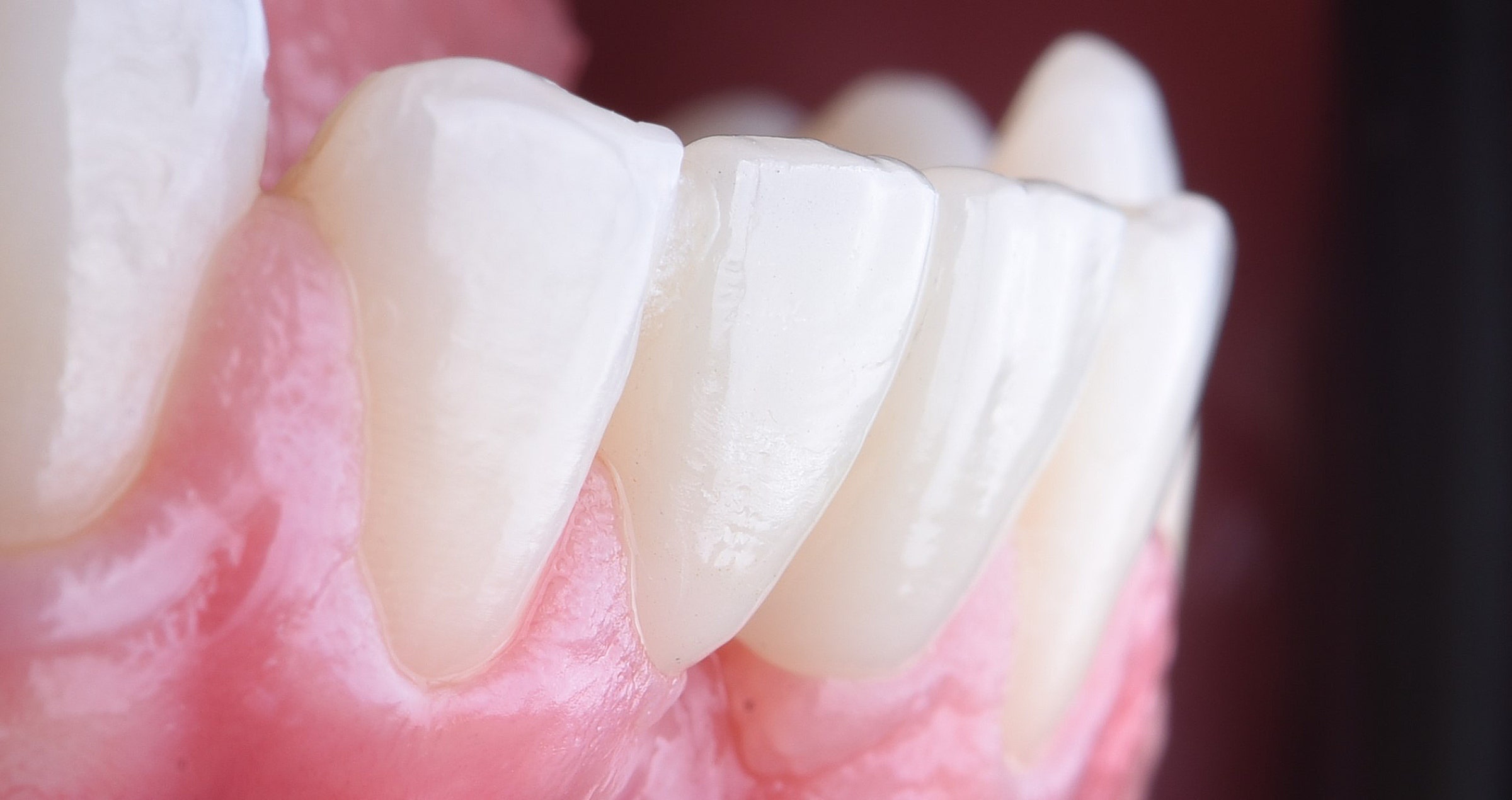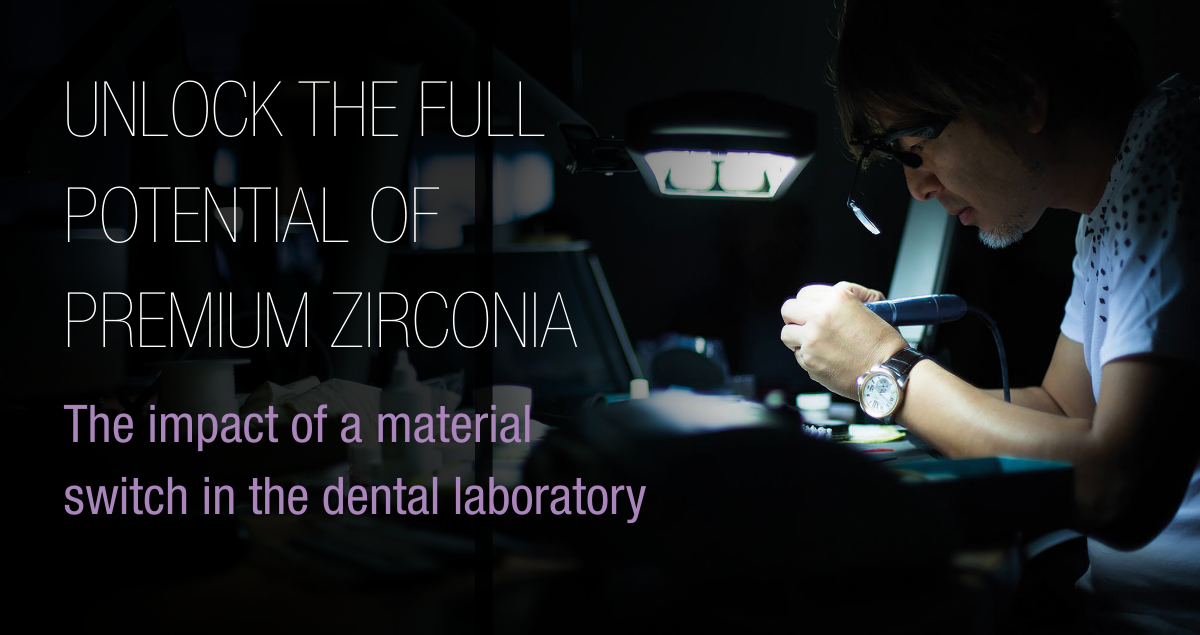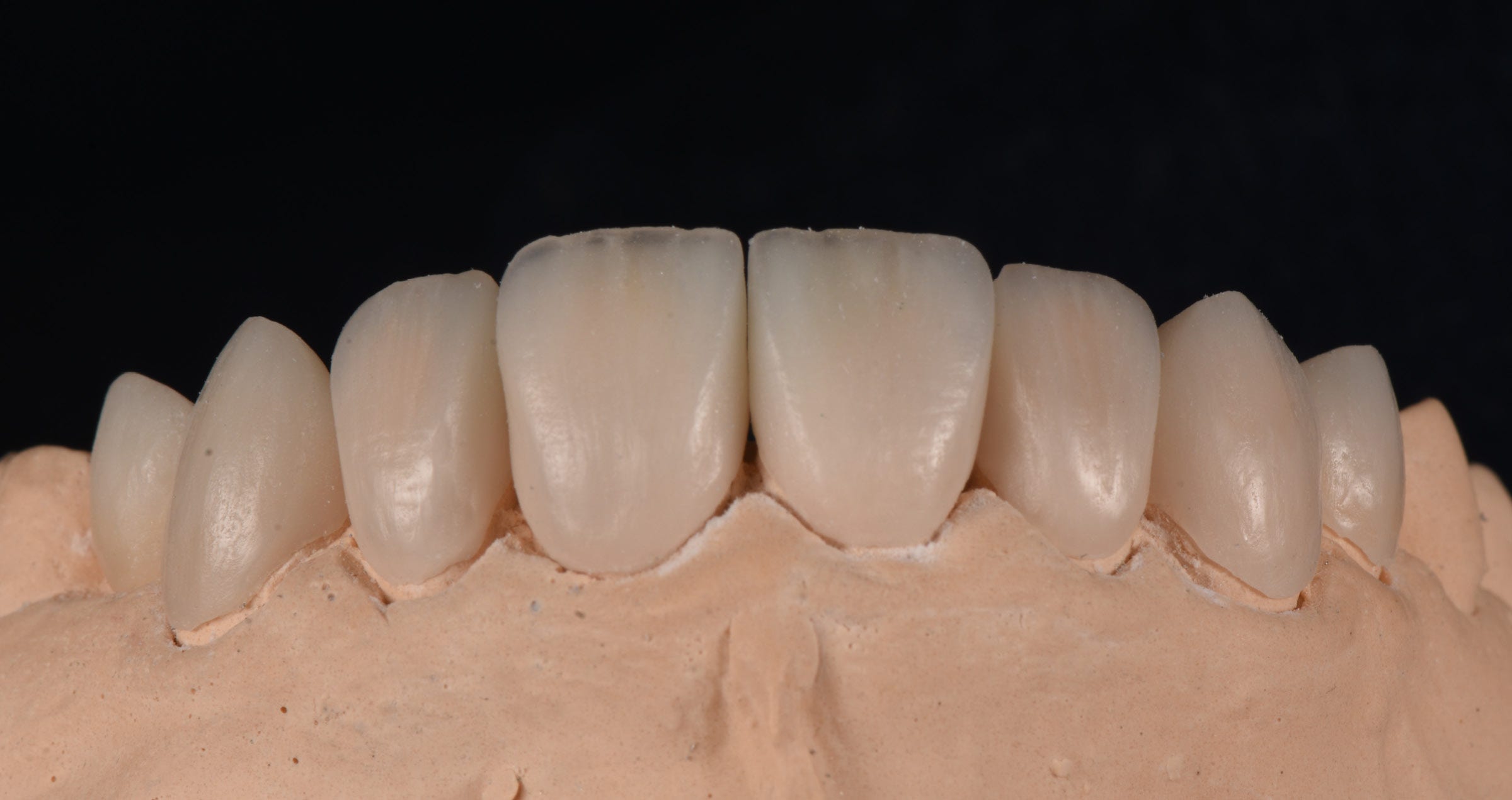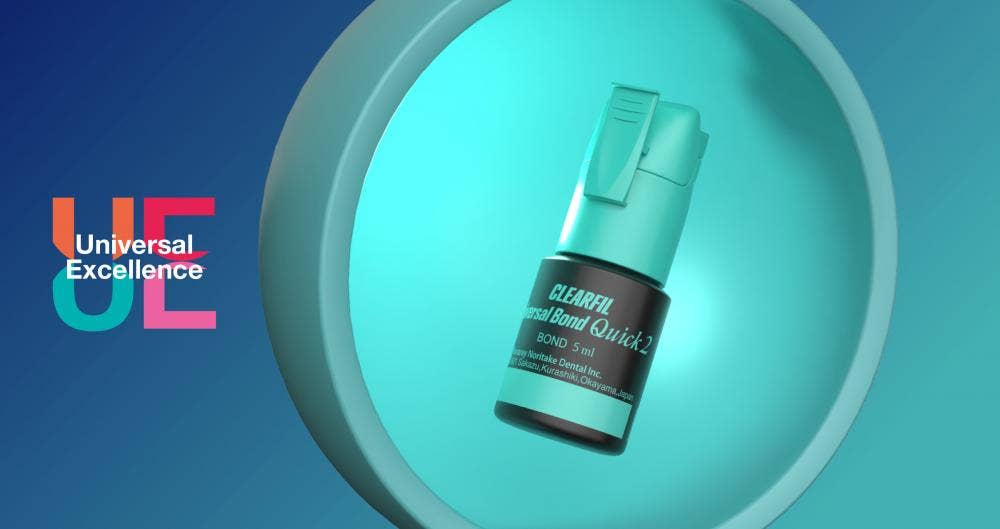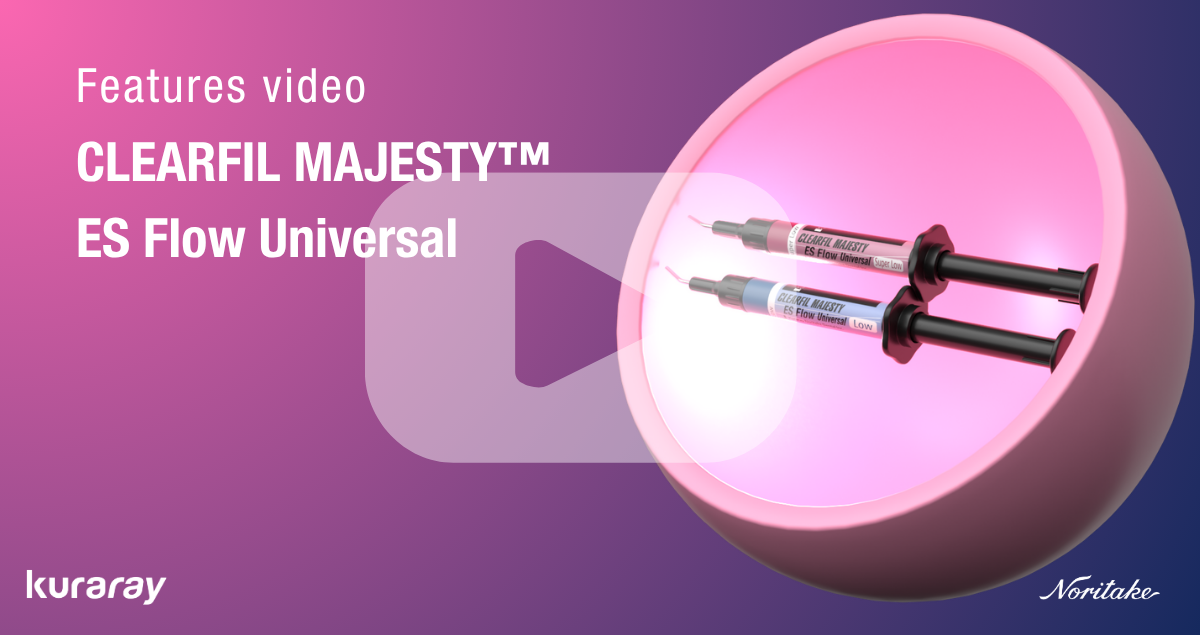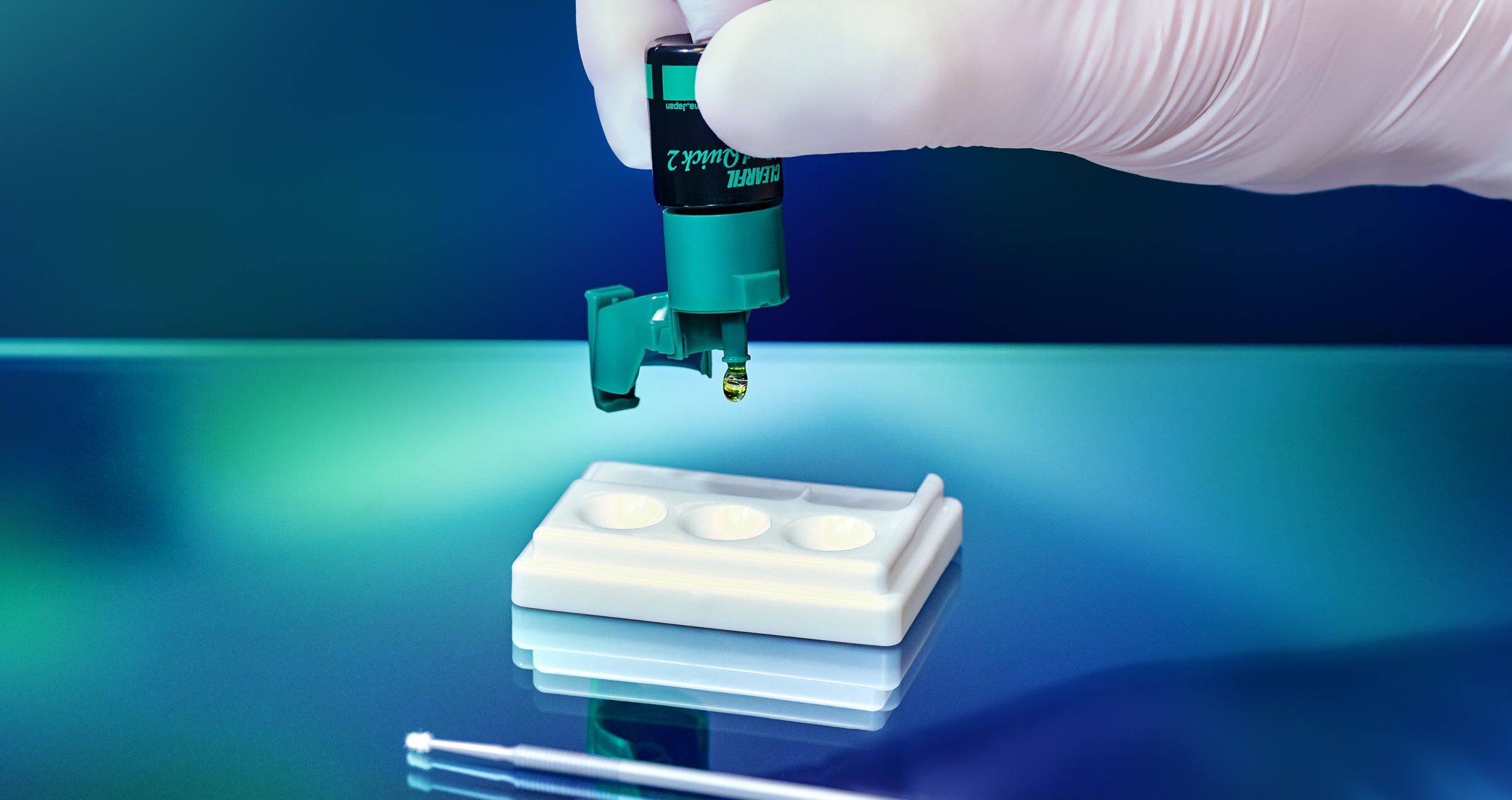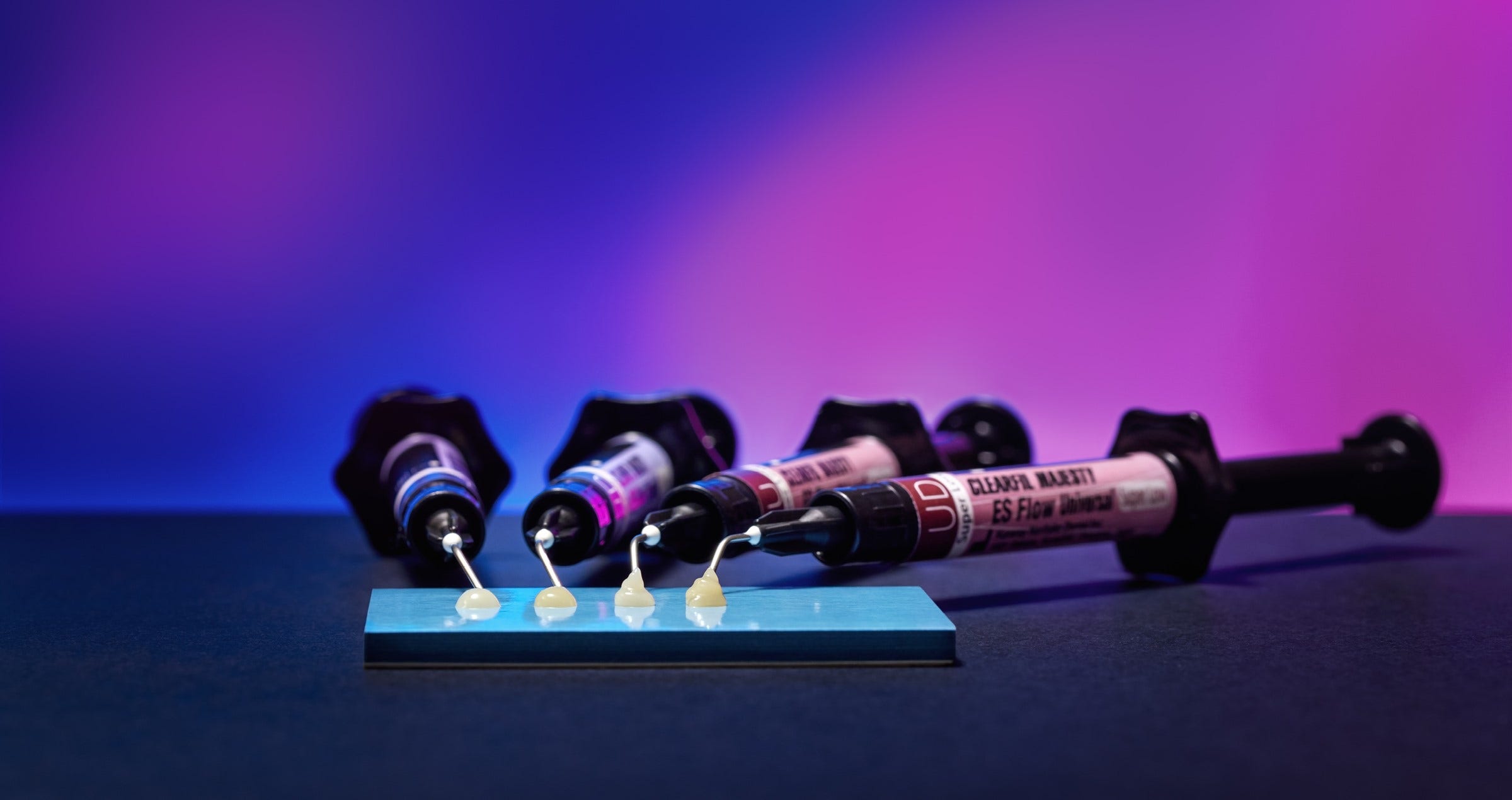Interview with the team at Kuraray Noritake Dental Inc., who developed and brought to life this new universal adhesive.
Streamlining, enhancing and refining adhesive procedures – these are the aims of an 5-person team at Kuraray Noritake Dental Inc. in Japan. Recently, the team has developed a next-generation universal adhesive CLEARFIL™ Universal Bond Quick 2 that offers quick and easy application combined with an optimised bonding performance. To learn more about the goals and achievements of the development project, and the benefits of the product, we had a conversation with them.
From left to right: Ryo Matsuura and Ryota Murayama (R&D Department), Kazutoshi Ikeda (Production Department), Marina Okada and Yamato Nojiri (Planning & Development Department).
Why did you decide to improve CLEARFIL™ Universal Bond Quick?
Universal adhesives like CLEARFIL™ Universal Bond Quick are very well received by dental practitioners all over the world mainly due to their versatility and procedural simplicity. In the clinical setting, however, we have identified room for improvement. For example, it can be difficult to establish thin, uniform and strong bonding layers with the currently available products. Water and solvents in universal adhesives often limit the formation of a strong bond layer. A thin bonding layer and the relatively thick oxygen inhibition layer make this type of bonding agent susceptible to degradation by water sorption from dentinal moisture. Highly viscous bonding agents also complicate the ease of application in small cavities and can easily lead to pooling of the adhesive in critical parts of the cavity. Adhesives with a relatively high viscosity may pool or accumulate along margins, and may form a layer that is too thick and may change the morphology of the abutment tooth, a critical factor potentially affecting the fit of an indirect restoration. Generally, bonding agents with a low film thickness and/or are low-filled or unfilled, in turn have a potentially negative effect on the strength of the bonding layer. At Kuraray Noritake Dental Inc., we wanted to address the aforementioned issues and have developed a universal adhesive that is easy to apply and facilitates the establishing of thin, uniform bonding layers exhibiting high strength.
What are the indications of CLEARFIL™ Universal Bond Quick 2?
The new universal adhesive is indicated for bonding procedures in the context of creating direct restorations with light-cured composite, sealing of a prepared cavity or abutment tooth as a pretreatment for indirect restorations, treatment of exposed root surfaces and hypersensitive teeth, and also the intraoral repair of fractured restorations. Furthermore, the product is a suitable adhesive in post-cementation and core build-up procedures as well as in adhesive cementing of indirect restorations. When used in the context of the cementing of indirect restorations, the bonding to tooth structure of PANAVIA™ SA Cement Universal and of other manufacturers’ self-adhesive resin cements improves, leading to higher bond strengths.
What are the corresponding general benefits of CLEARFIL™ Universal Bond Quick AND CLEARFIL™ Universal Bond Quick 2?
The general benefits of both products are that they may be used with any etching procedure, plus the fact that there is no need to wait for the adhesive to penetrate the tooth structure after application. In addition, both products contain the original MDP monomer and the amide monomer, responsible for the formation of a thin and strong surface coating. Both products exhibit low technique sensitivity and are suitable for a wide range of indications. Finally, the adhesive monomers and fluoride offer extra protection to the underlying dentin.
Monomer image from the brochure
You mentioned the original MDP monomer as one of the essential components of the new adhesive and its predecessor. Is there a difference between this original MDP monomer and other MDP monomers available on the market?
Our MDP monomer is the only MDP monomer that is manufactured using the originally developed synthesis and purification process. Research has shown that the way MDP is manufactured has indeed an impact on the performance of the monomer itself1. While impurities and dimers detected in MDP monomers synthesized elsewhere negatively affected the immediate and aged micro-tensile bond strength in the in-vitro study, our MDP monomer shows high purity and more favourable test results.
Most universal adhesives need to be rubbed into the tooth structure extensively for 10 to 20 seconds. What did you do to eliminate the waiting time independent of the etching procedure, which led to an ultra-quick application procedure?
It is the amide monomer which is mainly responsible for an improved penetration speed into the tooth structure. The hydrophilicity of this monomer is much higher than the hydrophilicity of the HEMA monomer that is typically used. This provides for a better penetration into the moist dentin. The amide monomer’s polymerisation characteristics are better, and, following polymerisation, leads to higher stability in a wet environment due to the formation of a highly cross-linked polymer network. In combination with MDP, an efficient long-term performance will likely be achieved. For optimal outcomes, the adhesive is simply rubbed into the tooth structure as described in the IFU: “Apply BOND with a rubbing motion to the entire cavity wall with the applicator brush. No waiting time is required.”
What are the additional benefits that CLEARFIL™ Universal Bond Quick 2 has to offer?
First of all, we improved the viscosity and film thickness by optimizing the manufacturing method. The thin adhesive layer prevents pooling in the cavity, around abutments and along margins, creating a uniform bonding layer. Simply put, the new adhesive is applied thinly and spreads evenly. At the same time, the product offers high mechanical strength and excellent resistance to water sorption. Its bond strength is high in all etching modes and the new formulation allows for the product to be stored at room temperature.
Please explain the clinical benefit of an improved mechanical strength.
The risk of decreasing the film thickness lies in a possible decrease in the strength of the bonding layer which can lead to reduced bond durability. By introducing a new multifunctional urethane methacrylate monomer, we have been able to increase the strength. The effective advantage of the new bonding agent is that it can easily be used in small, difficult-to-access cavities or in cavities with complex morphology. The result is a thin yet strong adhesive layer that also allows for easy placement of any type of restoration.
How did you manage to improve the storage conditions?
Component stability was not an issue with CLEARFIL™ Universal Bond Quick. However, for a stable viscosity, it needed low-temperature storage. By optimizing the manufacturing method and decreasing the viscosity of CLEARFIL™ Universal Bond Quick 2, storage at room temperature became possible.
Was it difficult to integrate the new components and keep the existing benefits? How did you manage?
Integrating new components and removing others always means that the whole formulation needs to be rebalanced properly. This was particularly challenging for the multifunctional urethane methacrylate monomer we wanted to add. It improves the strength and hardness of the universal adhesive, but may affect adhesion depending on the amount of the compound in the formulation. Consequently, we needed to carefully find optimal balance, which took some time and required thorough testing, but in the end, we succeeded.
At the moment, the immediate dentin sealing technique is popular in indirect restoration procedures. What makes CLEARFIL™ Universal Bond Quick 2 suited for this technique?
Immediate dentin sealing is indeed a popular and useful technique that can result in significantly increased retention, reduced marginal leakage, improved bond strength, and less postoperative sensitivity. Using CLEARFIL™ Universal Bond Quick 2 in this context is beneficial as the procedure is quick, the resulting bonding layer is thin and strong, and the dentin is effectively protected.
Why should a dental practitioner switch to CLEARFIL™ Universal Bond Quick 2?
For users of CLEARFIL™ Universal Bond Quick, switching to CLEARFIL™ Universal Bond Quick 2 is worthwhile, as it offers additional advantages and improved performance while retaining the benefits of its predecessor. For users of other universal adhesives, the major benefit lies in the shortened application time: CLEARFIL™ Universal Bond Quick 2 is the only universal adhesive that can achieve a high bond strength and a high-strength bonding layer without any waiting time. In addition, it is suitable for a wide range of indications including core build-up procedures and cementation.
Thank you very much for these insights!
References
1. Yoshihara K, Nagaoka N, Okihara T, Kuroboshi M, Hayakawa S, Maruo Y, Nishigawa G, De Munck J, Yoshida Y, Van Meerbeek B. Functional monomer impurity affects adhesive performance. Dent Mater. 2015 Dec;31(12):1493-501.


